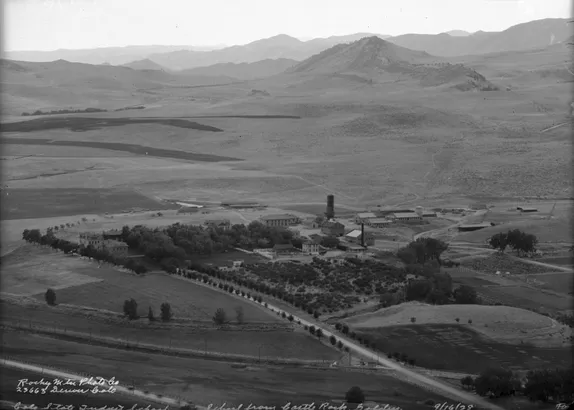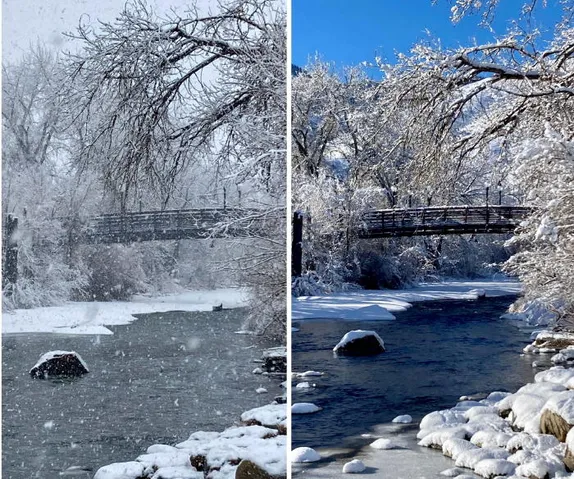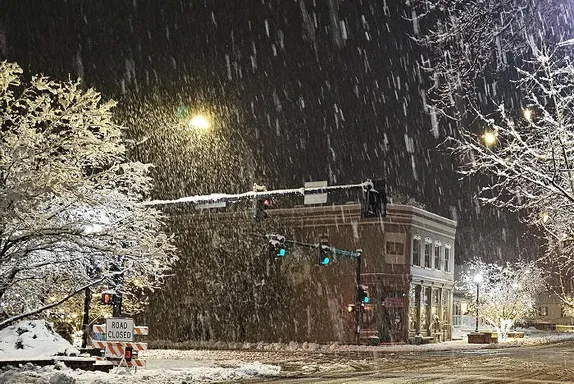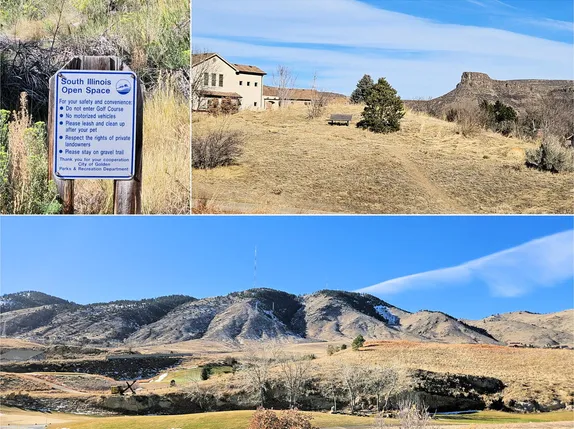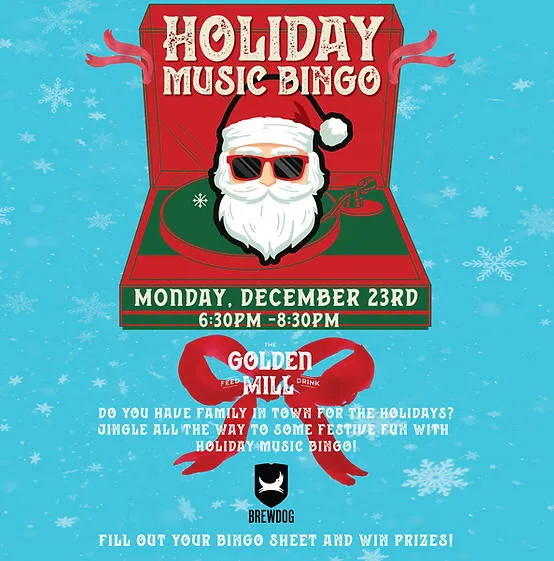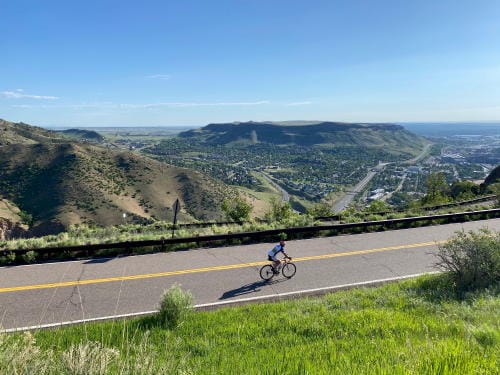
Public Health References
CDC * Colorado * Jefferson County * City of Golden
Jeffco Public Health is now publishing new stats Monday through Friday at 3PM, so I’ll publish the new ones in tomorrow’s email.
The Safer at Home protocol is in effect. Check the City’s site to learn more about what that entails. Everyone is still requested to wear a mask that covers the nose and mouth when leaving the house. City and County fire restrictions are in place. Clear Creek is open for Kayaks and Canoes. Learn more….
Yesterday
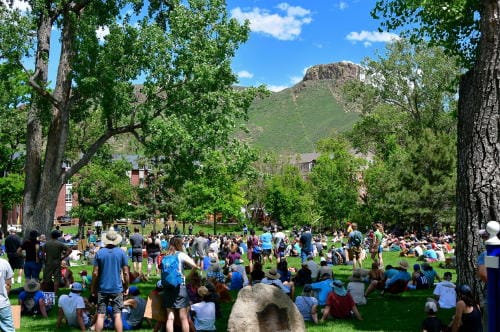
Sunday’s Golden Vigil and March was attended by about 1000 people. Frank Hanou and Chris Davell sent me some great photos, which you can view on the Goldentoday Facebook page. You can listen to the speeches and see the crowd and the march on Golden United’s Facebook page.
Virtual Golden
6:30-7:25AM Virtual Dynamic Circuit
9-10AM Virtual Power Training
10:15-11:15AM Spanish Story Time with the Library
6:30PM GURA Board Meeting
Tonight’s Urban Renewal Authority meeting will be broadcast through the Agenda page. Wait till 6:30, then refresh the page and you should see a link that says “View event.” Click it to watch. It won’t be available before 6:30.
Among tonight’s topics: the Jefferson County Housing Authority has submitted the building permit for their low income housing project at 24th and Ford. They will begin demolishing the existing buildings this month. Work on DeLong Park will probably be delayed for a while, because the City will have a lot less sales tax revenue to work with this year.
The board will discuss the COVID-19 loans being offered to Golden businesses. As you may recall, a $1 million pool of money was made available, with $200K each from the GURA and DDA budgets and $600K from the Legacy Fund (which was ~$1.8 million left from GURA’s time downtown, intended to be used on one last, major downtown revitalization project). So far, the first round of loan applications came up to $362K. They offered a second round, and so far it looks like that will total $130K.
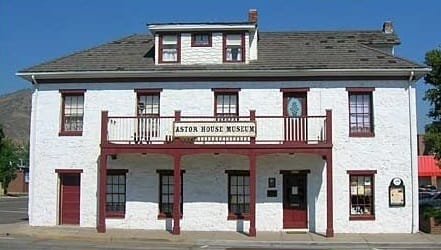
In other Legacy Fund news, there has been some progress regarding the Astor House. This has long been seen as an obvious way to spend the Legacy Fund, in that it’s the last remaining “blight” in our downtown area. A while back, City Council was considering selling the Astor House to be used as a business. Many citizens objected to this–they wanted the building to remain in the City’s hands for community use. Council told the citizens to come back with ideas for how the building should be used and money to fund those ideas.
A citizens group called the Astor House Alliance (AHA) has been working on this, surveying the community to identify ways to use the Astor House. Two local non-profits (the Civic Foundation and Foothills Art Center) have indicated that they would like to submit proposals to lease the Astor House from the City and use it for community purposes. AHA is developing some recommended criteria, based on the survey results, and they’ll turn them over to the City to help them evaluate the proposals. That’s progress!
Golden History Moment
For those of you who don’t check email over the weekend, on Saturday I wrote about a historic church, and on Sunday I wrote about a historic gas station.
Two years ago, I wrote a summary of the Ku Klux Klan’s history in Golden. In light of yesterday’s Black Lives Matter vigil, this might be a good time to reprint it.
KKK: A Dark Chapter from Golden History
Originally published June 11, 2018
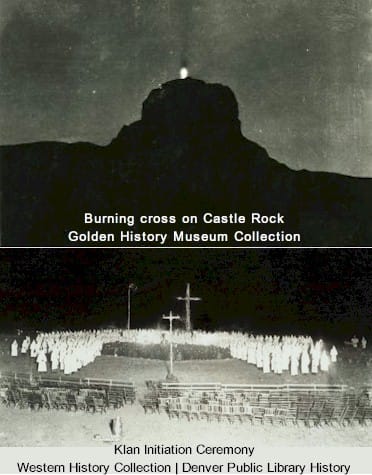
I give a lot of Golden history lectures. One topic that always fascinates people is the Ku Klux Klan. The KKK was originally formed in the south, right after the Civil War, but was largely rooted our during Reconstruction. In the mid-19-teens, a large scale revival of the Klan began, inspired by the movie “The Birth of a Nation.” That film showed a re-imagined, shockingly racist version of the south during Reconstruction, and depicted the Knights of the Ku Klux Klan as heroes.
This second generation Klan spread quickly throughout the U.S., including Colorado. Their tenets were pro-white Protestant and anti-anything else. They marketed themselves as a social club but were known for burning crosses and hiding their identities beneath robes and hoods. This second Klan reached its height of popularity in the mid-1920s and crumbled by the early 1930s.
I wanted to learn more about the Klan in Golden, so I spent yesterday going through the online Colorado Transcripts and searching for the words “klux” and “klan.” Here’s what I learned:
The Klan chapters throughout the Denver metro area held their gatherings on Castle Rock, above Golden. They drove out to Golden on “the cement road” (Colfax). The automobiles would be stopped by robed and hooded Klansmen on horses and their identities checked before they were allowed to proceed up South Table Mountain towards Castle Rock. During their meetings, they burned crosses which, according to the Transcript, were at least 50 feet high and could be seen for miles around. The Transcripts dated 4/20/22, 9/27/23, and 10/23/23 describe the meetings.
They made very public donations to what they considered worthy causes. In 1923 and 1924, the Transcript told of hooded Klansmen visiting the Presbyterian, Methodist, and Baptist churches in Golden and donating money or, in one case, a rug that the church needed. In 1925 they contributed an American flag and a fifty-foot flagpole to the City, and installed it at the intersection of 12th and Washington. In 1926, the ladies of the KKK donated $145 to the school board for playground equipment for Golden’s schools.
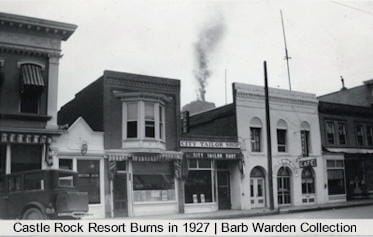
In 1927, the old dance hall on Castle Rock, which had been used as a meeting place for the KKK, burned down. The Klan was beginning to die out by that time as its highest-ranking officers were indicted for embezzlement. A few attempts were made to revive the Klan during the 1930s, but for the most part it stayed dormant until the 1950s, when it was revived in the south, in response to the Civil Rights movement.
6/8/2020 Addendum
My late friend, Lorraine Wagenbach, was raised on Wide Acres Road, east of Golden. She was very young at the time, but she remembered seeing the Klan driving out from Denver to hold their meetings on South Table Mountain. She wrote,
I can remember the long lines of cars that traveled the old Golden cement road in front of our house and then up Lava Lane (now Quaker Street) in the weekly Ku Klux Klan parade to Castle Rock. I recall people talking of their burning the cross, which I never really understood but which I greatly feared. We could see the white hooded robes of the members through the open touring cars.
From A Woman’s Life in Golden
Lorraine’s family were Catholic, so they had good reason to be nervous about the Klan.
The Golden Transcript (originally called the Colorado Transcript) has been publishing since 1866. The Golden History Museum has been working on digitizing the historic issues. You’ll find old Transcripts online at coloradohistoricnewspapers.org.

